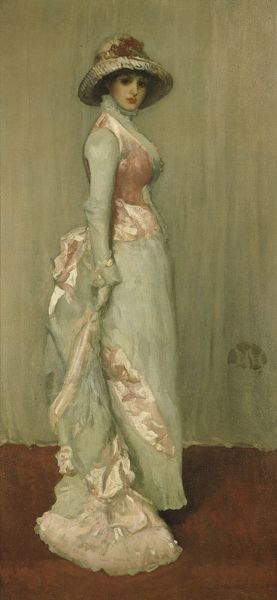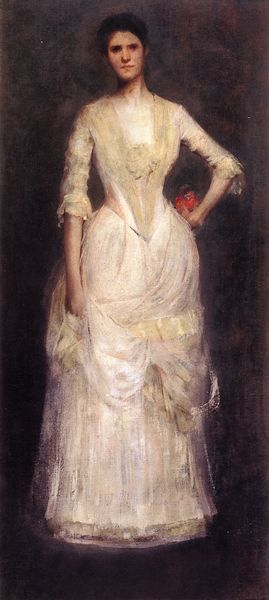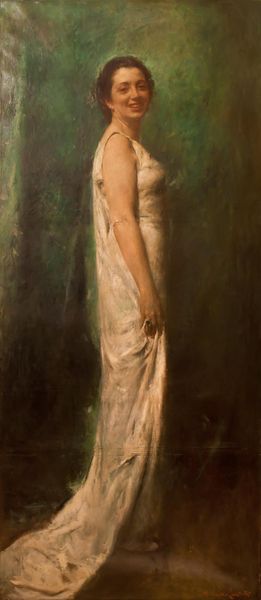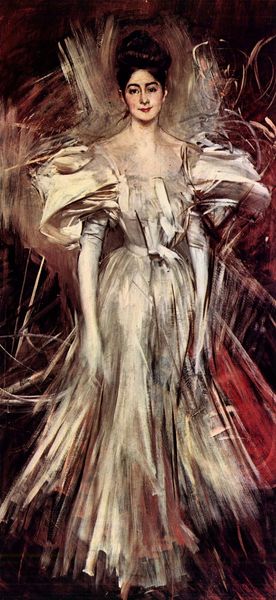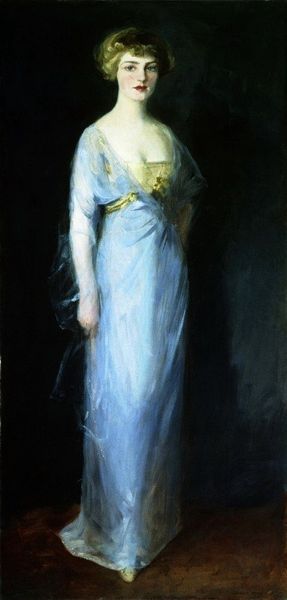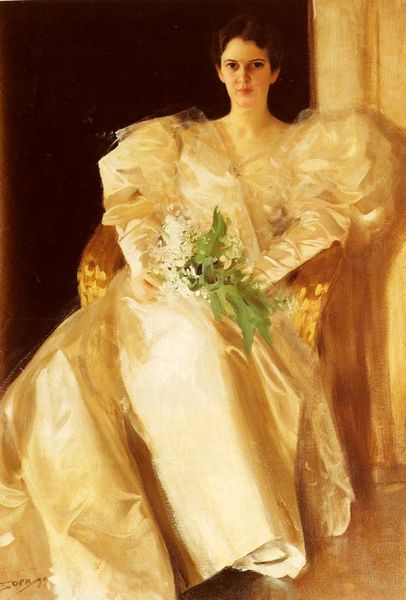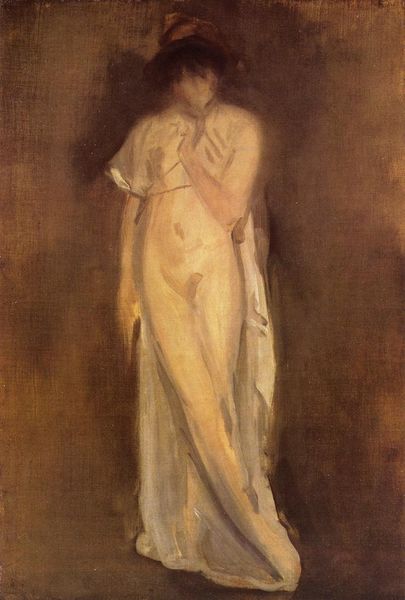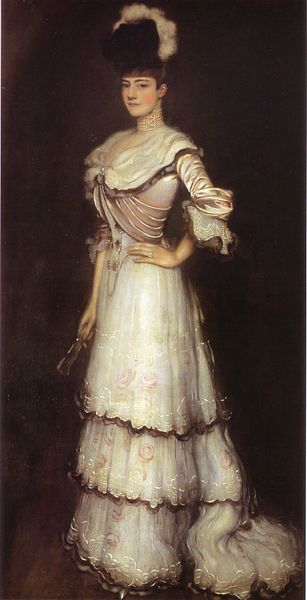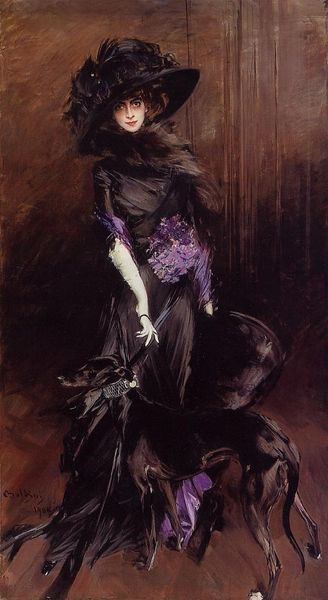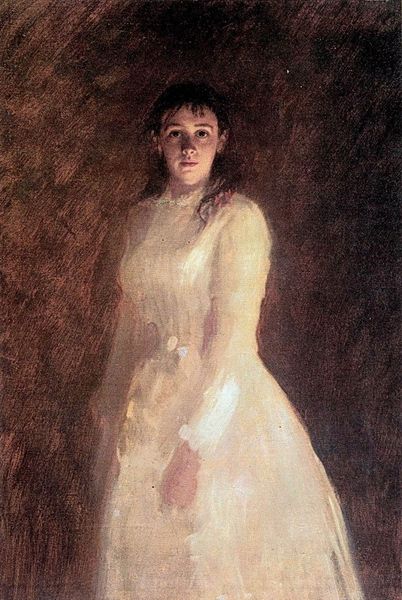
Copyright: Public domain
Curator: Here we have Anders Zorn’s shimmering portrait of Mrs. Potter Palmer, painted in 1893. There's an ethereal quality to her, almost like she's emerging from a dream. Editor: Absolutely, she practically floats. The color palette feels confined, like the painter swathed her in shadows that hug her form. What do you suppose is happening with the light? Curator: Zorn really captures her poise and presence with those bold, confident strokes. You see a flash of impressionism, especially in the shimmering gown, which just seems to dissolve into the background. Editor: It’s an interesting dance between confidence and vulnerability, right? I mean, there’s this unmistakable air of aristocracy, but then those fleeting brushstrokes and the soft, almost hazy edges create this fragility. How can we reconcile these seeming opposites? Curator: Mrs. Palmer was more than just an aristocrat; she was a champion of art and civic improvements. And, though maybe a champion is not the first thing we notice with the haze. Maybe, it's like Zorn is subtly hinting at the shifting societal roles of women during that era. Editor: And you are also referring to how Bertha Honoré Palmer was very involved with the World's Columbian Exposition, which celebrated the 400th anniversary of Christopher Columbus's arrival in the New World? Curator: Exactly! And consider the historical context. The World's Fair was this beacon of progress and hope, but underneath, there were real tensions about social inequality, labor rights, and yes, gender roles. The painting might be inviting us to look beyond the gilded surface and contemplate the complexities of her world. Editor: I’d never thought of the painting this way! And now I do see her gown almost dissolving and think, "Oh! It is not stable... maybe *her* world isn't that stable!" It feels particularly relevant, that feeling of things maybe floating away at this moment. Curator: Well, isn't that the enduring power of art? It captures not just a moment, but also the currents of history flowing beneath. Thank you for giving this portrait new context and insight. Editor: Of course! It’s rewarding to appreciate those currents in full.
Comments
No comments
Be the first to comment and join the conversation on the ultimate creative platform.
